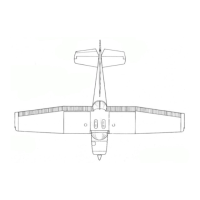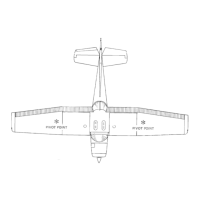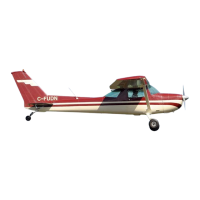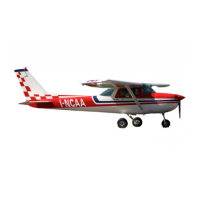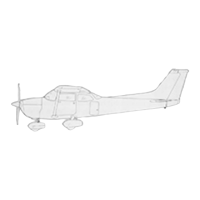Do you have a question about the Cessna 1970 150 and is the answer not in the manual?
Steps for exterior inspection, engine start, and pre-takeoff.
Procedures for normal and maximum performance take-offs and climbs.
Steps for cruise flight, normal and balked landings.
Actions after landing and securing the aircraft.
Overview of instrument panel and fuel system components.
Details on electrical system, master switch, flaps, and related components.
Cabin heating, parking brake, engine starting, and taxiing procedures.
Pre-takeoff checks, power checks, and taxiing diagrams.
Take-off details, climb/cruise data, stall characteristics, and landing techniques.
Procedures for starting the engine in cold weather conditions.
Troubleshooting electrical system malfunctions like over/undercharging.
Addressing rough engine, magneto issues, and low oil pressure.
Steps for landing without engine power and ditching procedures.
Handling disorientation in clouds and fires.
Overview of approved operations, certifications, and permitted maneuvers.
Airspeed limitations, engine operation limits, and instrument markings.
Procedures for calculating and maintaining aircraft weight and balance.
Rules for loading and securing baggage within weight limits.
Procedures for maneuvering and securing the aircraft on the ground.
Instructions for cleaning windshields, painted surfaces, aluminum, and propellers.
Procedures for cleaning the cabin interior and for flyable storage.
Information on required inspections, service intervals, and owner follow-up.
Overview of data compiled for flight planning and performance.
Tables for correcting indicated airspeed and stall speeds, and take-off data.
Performance data for climb rates, landing distances, and cruise performance.
Chart showing glide distance based on altitude.
Description of extended fuel tanks and cold weather equipment.
Use of external power and radio transmitter selection.
Operation and checklist for the optional wing leveler system.
Quick-drain valves and the true airspeed indicator.
Steps for exterior inspection, engine start, and pre-takeoff.
Procedures for normal and maximum performance take-offs and climbs.
Steps for cruise flight, normal and balked landings.
Actions after landing and securing the aircraft.
Overview of instrument panel and fuel system components.
Details on electrical system, master switch, flaps, and related components.
Cabin heating, parking brake, engine starting, and taxiing procedures.
Pre-takeoff checks, power checks, and taxiing diagrams.
Take-off details, climb/cruise data, stall characteristics, and landing techniques.
Procedures for starting the engine in cold weather conditions.
Troubleshooting electrical system malfunctions like over/undercharging.
Addressing rough engine, magneto issues, and low oil pressure.
Steps for landing without engine power and ditching procedures.
Handling disorientation in clouds and fires.
Overview of approved operations, certifications, and permitted maneuvers.
Airspeed limitations, engine operation limits, and instrument markings.
Procedures for calculating and maintaining aircraft weight and balance.
Rules for loading and securing baggage within weight limits.
Procedures for maneuvering and securing the aircraft on the ground.
Instructions for cleaning windshields, painted surfaces, aluminum, and propellers.
Procedures for cleaning the cabin interior and for flyable storage.
Information on required inspections, service intervals, and owner follow-up.
Overview of data compiled for flight planning and performance.
Tables for correcting indicated airspeed and stall speeds, and take-off data.
Performance data for climb rates, landing distances, and cruise performance.
Chart showing glide distance based on altitude.
Description of extended fuel tanks and cold weather equipment.
Use of external power and radio transmitter selection.
Operation and checklist for the optional wing leveler system.
Quick-drain valves and the true airspeed indicator.
| Manufacturer | Cessna |
|---|---|
| Model | 150 |
| Year | 1970 |
| Engine | Continental O-200-A |
| Horsepower | 100 hp |
| Height | 8 ft 6 in (2.59 m) |
| Gross Weight | 1, 600 lb (726 kg) |
| Max Takeoff Weight | 1, 600 lb (726 kg) |
| Rate of Climb | 670 ft/min (3.4 m/s) |
| Service Ceiling | 14, 000 ft (4, 300 m) |
| Seating Capacity | 2 |

